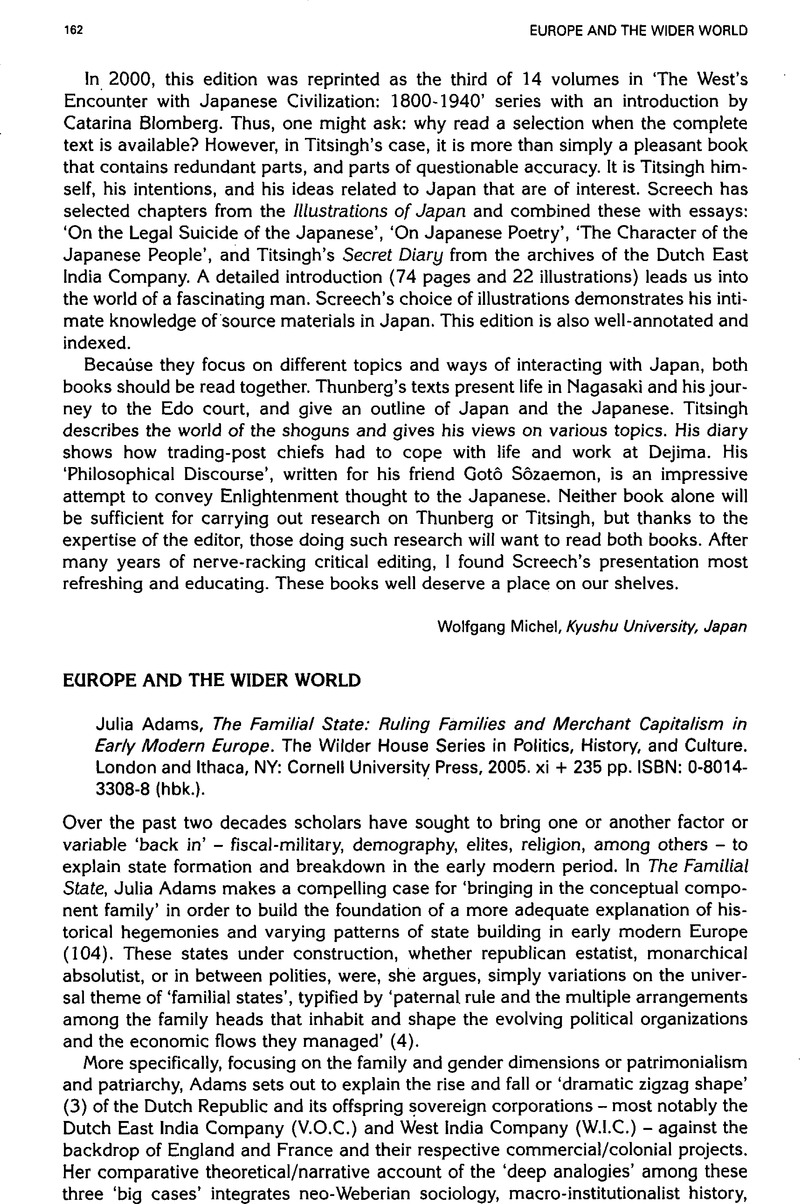No CrossRef data available.
Article contents
Julia Adams, The Familial State: Ruling Families and Merchant Capitalism in Early Modern Europe. The Wilder House Series in Politics, History, and Culture. London and Ithaca, NY: Cornell University Press, 2005. xi + 235 pp. ISBN: 0-8014-3308-8 (hbk.).
Published online by Cambridge University Press: 22 April 2010
Abstract

- Type
- Reviews: Europe and the Wider World
- Information
- Copyright
- Copyright © Research Institute for History, Leiden University 2006
References
Notes
1 Ariadne Schmidt, ‘Women and Work in the Early Modern Netherlands: An Introduction to the Project’, 17 (www.iisg.nl/research/schmidt.doc). See also the special issue on ‘female labor i n the early modern period’ in the Tijdschrift voor Sociale en Economische Geschiedenis 2:3 (2005).
2 Gaastra, F.S., ‘De VOC als Werkgever’, in Parmentier, Jan, ed., Uitgevaren voor de Kamer Zeeland. Zutphen; Walburg Pers, 2006, 31–46;Google ScholarIdem, , ‘Zeeuwen en de VOC’, in Par-mentier, Jan, ed., Noord-Zuid in Oost-lndisch Perspectief. Zutphen: Walburg Pers, 2005, 99–118Google Scholar.
3 Vink, M.P.M., ‘Between Profit and Power: The Dutch East India Company and Institutional Early Modernities in the Age of Mercantilism’, in Bentley, Jerry H. and Parker, H., eds., Between the Middle Ages and Modernity: Individual and Community in the Early Modern World. New York, NY: Rowman and Littlefield (forthcoming).Google Scholar
4 For the most recent contributions, see the special issue on ‘corruption in the Netherlands in the early modern period’ in the Tijdschrift voor Sociale en Economische Geschiedenis 2:4 (2005).Google Scholar




